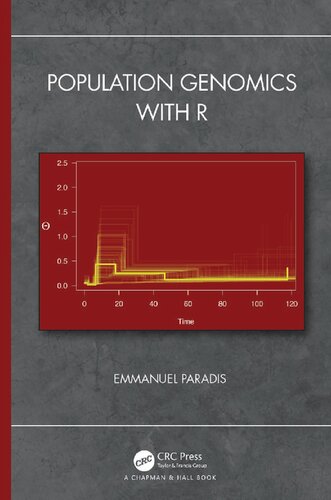

Most ebook files are in PDF format, so you can easily read them using various software such as Foxit Reader or directly on the Google Chrome browser.
Some ebook files are released by publishers in other formats such as .awz, .mobi, .epub, .fb2, etc. You may need to install specific software to read these formats on mobile/PC, such as Calibre.
Please read the tutorial at this link. https://ebooknice.com/page/post?id=faq
We offer FREE conversion to the popular formats you request; however, this may take some time. Therefore, right after payment, please email us, and we will try to provide the service as quickly as possible.
For some exceptional file formats or broken links (if any), please refrain from opening any disputes. Instead, email us first, and we will try to assist within a maximum of 6 hours.
EbookNice Team

Status:
Available4.5
33 reviewsPopulation Genomics With R presents a multidisciplinary approach to the analysis of population genomics. The methods treated cover a large number of topics from traditional population genetics to large-scale genomics with high-throughput sequencing data. Several dozen R packages are examined and integrated to provide a coherent software environment with a wide range of computational, statistical, and graphical tools. Small examples are used to illustrate the basics and published data are used as case studies. Readers are expected to have a basic knowledge of biology, genetics, and statistical inference methods. Graduate students and post-doctorate researchers will find resources to analyze their population genetic and genomic data as well as help them design new studies.
The first four chapters review the basics of population genomics, data acquisition, and the use of R to store and manipulate genomic data. Chapter 5 treats the exploration of genomic data, an important issue when analysing large data sets. The other five chapters cover linkage disequilibrium, population genomic structure, geographical structure, past demographic events, and natural selection. These chapters include supervised and unsupervised methods, admixture analysis, an in-depth treatment of multivariate methods, and advice on how to handle GIS data. The analysis of natural selection, a traditional issue in evolutionary biology, has known a revival with modern population genomic data. All chapters include exercises. Supplemental materials are available on-line (http://ape-package.ird.fr/PGR.html).